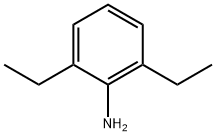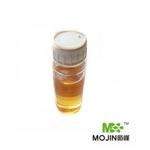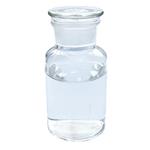Chemical Properties
Clear liquid
Uses
2,6-Diethylaniline is used as a reagent in the synthesis of herbicides, for instance Butachlor (B689925); a pre-emergent chloroacetanalide herbicide commonly used for weed control in rice as well as cotton, maize, wheat and other crops.
Production Methods
2,6-Diethylaniline is obtained in high yield when aniline is heated with ethylene at 200-300°C under high pressure in the presence of aluminum anilide (Northcott 1978).
General Description
The 2,6-diethylaniline complexes with iodine, as a sigma-acceptor, were studied spectrophotometrically in chloroform, dichloromethane and carbontetrachloride solutions. It is an intermediate for the production of alachlor, butachlor, metolachlor-herbicides, tiafentiurone-insecticide, carbodiimide and RIM-PUR.
Industrial uses
2,6-Diethylaniline is used in the synthesis of herbicides such as Nevirex G and butachlor (Vertesi and Miklos 1982; Lee et al 1982).
Metabolic pathway
Incubation of 2,6-diethylaniline (DEA) with NADPH-
fortified rat liver microsomal enzymes produces 4-
amino-3,5-diethylphenol (ADEP) as the major
oxidation product. ADEP is shown to undergo further
oxidation to 3,5-diethylbenzoquinone-4-imine (DEBQI),
which is isolated as a minor metabolite during DEA
oxidation.
Metabolism
Incubation of 2,6-diethylaniline with NADPH-fortified microsomes produced 4-amino-3,5-diethylphenol (ADEP) as the major oxidation product (Feng and Wratten 1987). ADEP underwent further oxidation to 3,5-diethyl-benzoquinone-4-imine which is isolated as a minor metabolite during 2,6-diethylaniline metabolism. 2,6-Diethylaniline is produced under aerobic soil conditions as a minor metabolite of the herbicide butachlor (Lee et al 1982). 2,6-Diethylaniline is degraded by the soil microorganism Chaetomium globosum to 2,6-diethylacetanilide and 2,6-diethyl-p-benzoquinone (Lee and Ryu 1982). 2,6-Diethylaniline was also very persistent towards biodegradation in pond water with and without sewage sludge inoculation (Lyons et al 1985).





